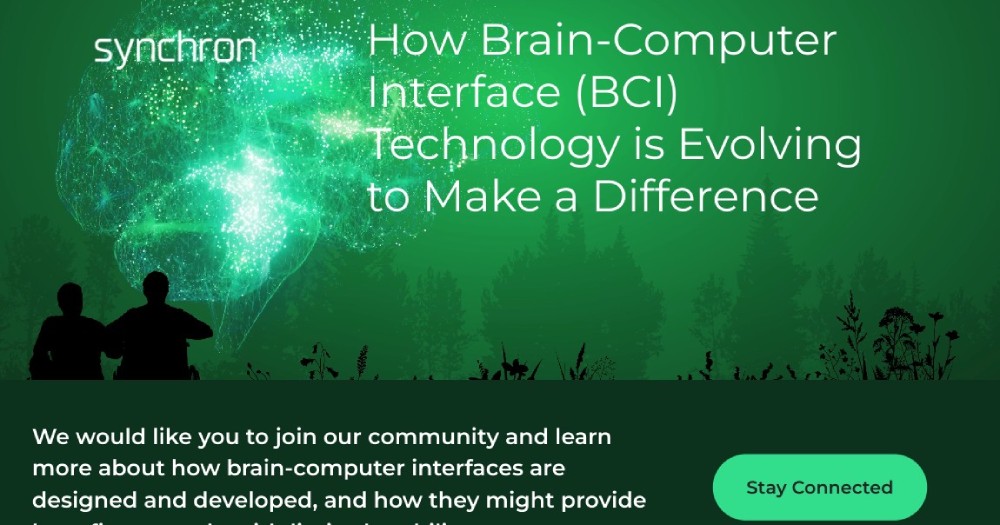Company introduces generative AI solution to enable hands-free texting for paralysis patients

New York City-based Synchron — which is the brain-computer interface (BCI) company developing endovascular technology to restore functionality in individuals with motor impairment — announced the integration of OpenAI's generative AI technology into its brain-computer interface (BCI) platform in a new chat feature.
With OpenAI's advanced generative AI system, Synchron further enhances the capability of its BCI technology to enable people with severe paralysis who have lost upper limb mobility to interact with the digital world hands-free, through thought alone.
How does it work?
Synchron's BCI chat feature, powered by OpenAI, is designed to be simple to use and easy to learn. It can now generate automated texting and chatting prompts categorized by contextual inputs, including the user's emotion. This integration reflects the company's commitment to patient-first innovation in neurotechnology. Synchron does not share the BCI user's brain data with OpenAI.
OpenAI's multimodal GPT generates content across text and audio, allowing for more natural, real-time human-AI interactions. This is critical for individuals with neurological disorders, who may otherwise have trouble generating complex responses contextual to their environment. Synchron will continue to assess state-of-the-art LLMs that best suit the needs of Synchron BCI users.
The Synchron BCI is implanted in the blood vessel on the surface of the motor cortex of the brain via the jugular vein through a minimally invasive endovascular procedure. Once implanted, it is designed to detect and wirelessly transmit motor intent out of the brain. It is intended to restore the capability of severely paralyzed people to control personal devices with hands-free point-and-click.
Why does it matter?
The updated BCI platform, powered by OpenAI's advanced generative AI models, allows users to text more efficiently. This includes faster response times, natural conversational speeds, and interaction with texting.
These advancements will benefit a wide range of users, including users with upper limb mobility impairment and other neurological diseases. Synchron's mission is to develop a first-in-class commercial BCI to enable millions of people worldwide with upper limb impairment to connect with the world.
On the record
"As someone who will likely lose the ability to communicate as my disease progresses, this technology gives me hope that in the future I'll still have a way to easily connect with loved ones. This will be a game changer," said Mark, a person living with ALS who is using Synchron's BCI platform.
"Our users have lost the ability to make choices due to neurological disorders. Generative AI can offer predictions that are contextual to your environment, and the BCI enables individual choices to be made," said Tom Oxley, CEO & Founder, Synchron. "BCIs preserve and extend a fundamental human right: the freedom of expression. We take our autonomy for granted, until it is gone. This is a pivotal moment at the convergence of powerful technologies that can restore lives."
The context
Synchron is a neurotechnology clinical-stage company developing an endovascular brain-computer interface (BCI) designed to restore functionality in people with severe paralysis. Its technology promises to restore motor signaling to control digital devices and autonomy for individuals with motor impairment, and as such, it can greatly improve people's lives.
💡Did you know?
You can take your DHArab experience to the next level with our Premium Membership.👉 Click here to learn more
🛠️Featured tool
 Easy-Peasy
Easy-Peasy
An all-in-one AI tool offering the ability to build no-code AI Bots, create articles & social media posts, convert text into natural speech in 40+ languages, create and edit images, generate videos, and more.
👉 Click here to learn more


